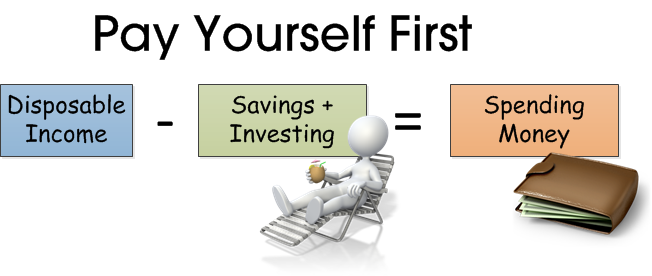Before we go to learn about subnetting.
First we need to know about IP Address. IP address is a numeric identifier assigned to each machine on
an IP network. It designates the specific location of a device on the network.
An IP address consists of 32 bits of information. These bits are divided into four sections, referred to as octets or bytes, each containing 1 byte (8bits). You can depict an IP address using one of three methods:
+) Dotted-decimal, as in 172.16.30.56
+) Binary, as in 10101100.00010000.00011110.00111000
+) Hexadecimal, as in AC.10.1E.38
All these examples truly represent the same IP address. Hexadecimal isn’t used as often as dotted-decimal or binary when IP addressing is discussed, but you still might find an IP address stored in hexadecimal in some programs. The Windows Registry is a good example of a program that stores a machine’s IP address in hex.
Network Addressing
The network address (which can also be called the network number) uniquely identifies each network. Every machine on the same network shares that network address as part of its IP address. In the IP address 172.16.30.56, for example, 172.16 is the network address.
The node address is assigned to, and uniquely identifies, each machine on a network. This part of the address must be unique because it identifies a particular machine—an individual—as opposed to a network, which is a group. This number can also be referred to as a host address.
In the sample IP address 172.16.30.56, the 30.56 is the node address.
IP address is divide by class. Below is the picture of IP Address Classes.
Network Address Range: Class A
The designers of the IP address scheme said that the first bit of the first byte in a Class A network address must always be off, or 0. This means a
Class A address must be between 0 and 127 in the first byte, inclusive.
Consider the following network address:
0xxxxxxx
If we turn the other 7 bits all off and then turn them all on, we’ll find the Class A range of network addresses:
00000000 = 0
01111111 = 127
So, a Class A network is defined in the first octet between 0 and 127, and it can’t be less or more. (Yes, I know 0 and 127 are not valid in a Class
A network. I’ll talk about reserved addresses in a minute.)
Network Address Range: Class B
In a Class B network, the RFCs state that the first bit of the first byte must always be turned on but the second bit must always be turned off. If you
turn the other 6 bits all off and then all on, you will find the range for a Class B network:
10000000 = 128
10111111 = 191
As you can see, a Class B network is defined when the first byte is configured from 128 to 191.
Network Address Range: Class C
For Class C networks, the RFCs define the first 2 bits of the first octet as always turned on, but the third bit can never be on. Following the same
process as the previous classes, convert from binary to decimal to find the range. Here’s the range for a Class C network:
11000000 = 192
11011111 = 223
So, if you see an IP address that starts at 192 and goes to 223, you’ll know it is a Class C IP address.
Network Address Ranges: Classes D and E
The addresses between 224 to 255 are reserved for Class D and E networks. Class D (224–239) is used for multicast addresses and Class E
(240–255) for scientific purposes, but I’m not going into these types of addresses in this book (and you don’t need to know them).
Network Addresses: Special Purpose
Some IP addresses are reserved for special purposes, so network administrators can’t ever assign these addresses to nodes. Table 3-4 lists the
members of this exclusive little club and the reasons why they’re included in it.
Class A Addresses
In a Class A network address, the first byte is assigned to the network address and the three remaining bytes are used for the node addresses.
The Class A format is as follows:
network.node.node.node
For example, in the IP address 49.22.102.70, the 49 is the network address and 22.102.70 is the node address. Every machine on this particular
network would have the distinctive network address of 49.
Class A Valid Host IDs
Here’s an example of how to figure out the valid host IDs in a Class A network address:
All host bits off is the network address: 10.0.0.0.
All host bits on is the broadcast address: 10.255.255.255.
The valid hosts are the numbers in between the network address and the broadcast address: 10.0.0.1 through 10.255.255.254. Notice that 0s
and 255s can be valid host IDs. All you need to remember when trying to find valid host addresses is that the host bits can’t all be turned off or all be
on at the same time.
Class B Addresses
In a Class B network address, the first 2 bytes are assigned to the network address and the remaining 2 bytes are used for node addresses. The format is as follows:
network.network.node.node
For example, in the IP address 172.16.30.56, the network address is 172.16 and the node address is 30.56.
Class B Valid Host IDs
Here’s an example of how to find the valid hosts in a Class B network:
All host bits turned off is the network address: 172.16.0.0.
All host bits turned on is the broadcast address: 172.16.255.255.
The valid hosts would be the numbers in between the network address and the broadcast address: 172.16.0.1 through 172.16.255.254.
Class C Addresses
The first 3 bytes of a Class C network address are dedicated to the network portion of the address, with only 1 measly byte remaining for the node
address. Here’s the format:
network.network.network.node
Using the example IP address 192.168.100.102, the network address is 192.168.100 and the node address is 102.
Class C Valid Host IDs
Here’s an example of how to find a valid host ID in a Class C network:
All host bits turned off is the network ID: 192.168.100.0.
All host bits turned on is the broadcast address: 192.168.100.255.
The valid hosts would be the numbers in between the network address and the broadcast address: 192.168.100.1 through 192.168.100.254.
Private IP Address
The people who created the IP addressing scheme also created what we call private IP addresses. These addresses can be used on a private network, but they’re not routable through the Internet. This is designed for the purpose of creating a measure of well-needed security, but it also conveniently saves valuable IP address space.
If every host on every network had to have real routable IP addresses, we would have run out of IP addresses to hand out years ago. But by using private IP addresses, ISPs, corporations, and home users only need a relatively tiny group of bona fide IP addresses to connect their networks to the Internet. This is economical because they can use private IP addresses on their inside networks and get along just fine.
To accomplish this task, the ISP and the corporation—the end user, no matter who they are—need to use something called Network Address Translation (NAT), which basically takes a private IP address and converts it for use on the Internet. (NAT is covered in Chapter 13, “Network Address Translation.”) Many people can use the same real IP address to transmit out onto the Internet. Doing things this way saves megatons ofaddress space—good for us all!
Source : CCNA Cisco Certified Network Associate S – Lammle_ Todd

























